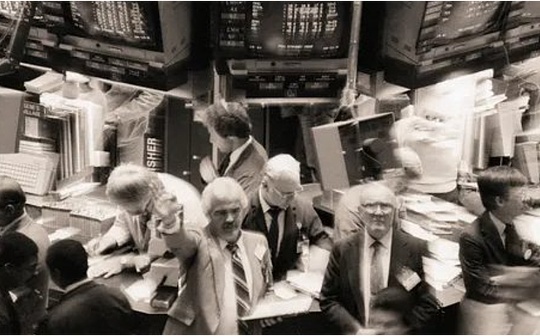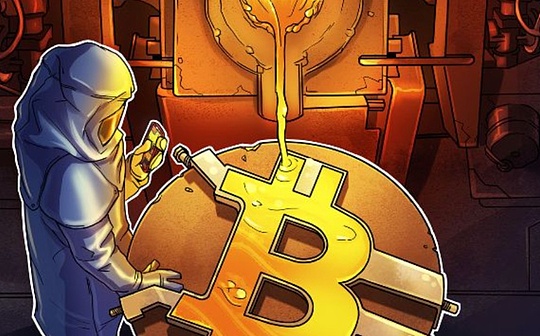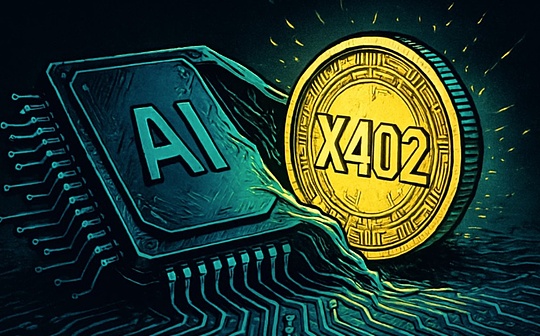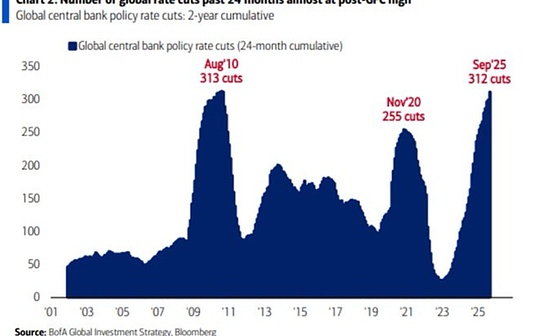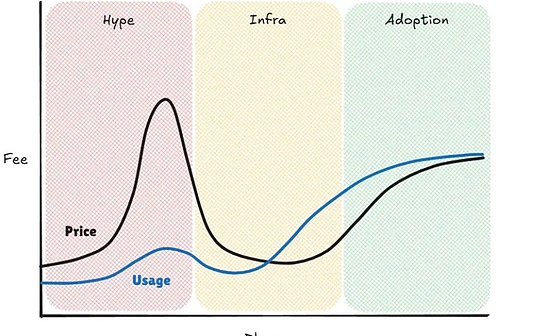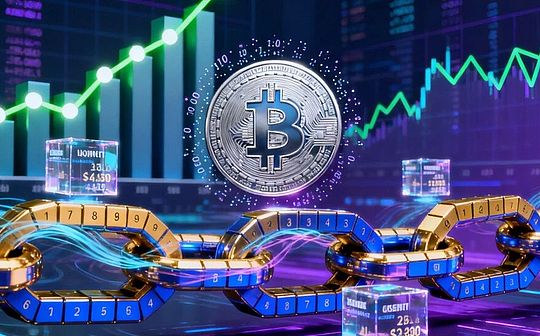
Author: Zhang Feng
In the wave of global financial digitization, “asset tokenization” is becoming the core bridge connecting traditional finance and the digital economy.Larry Fink, CEO of BlackRock, the world’s largest asset management company, calls it “the next revolution in the financial market,” while Japanese financial giant Nomura Securities is exploring a tokenization path that fits its own positioning in a complex and ever-changing market environment.
Although the two have the same goal – to achieve efficient flow of assets and reconstruct value through tokenization, their business backgrounds, strategic layouts, profit models and challenges are significantly different.This article will conduct a comparative analysis of the tokenization practices of the two institutions from multiple dimensions, and explore their future development trends based on cases.

1. The different foundations of global vision and regional cultivation
BlackRock, the digital transformation of the global asset management giant.As a leader in the global asset management industry, BlackRock’s business scale and strategic foresight together form a solid foundation for its promotion of tokenization.As of the third quarter of 2025, BlackRock’s assets under management (AUM) have reached US$13.5 trillion. This figure not only reflects its market influence, but also provides sufficient capital, technology and customer resources for its exploration in the field of tokenization.
It is worth noting that Larry Fink’s attitude towards digital assets has undergone a significant transformation from “skeptic” to “advocate”.He has publicly criticized Bitcoin as a “money laundering index”, but in recent years has repeatedly emphasized the strategic significance of blockchain technology and asset tokenization. He even compared crypto assets to “digital gold” and believed that it plays an irreplaceable role in diversifying investment portfolios.This high-level cognitive change provides top-level support for BlackRock to fully embrace tokenization.
Nomura Securities, the internationalization lessons and business reshaping of local giants.As Japan’s largest investment bank and securities company, Nomura Securities’ business roots are deeply rooted in the Japanese market, and it is also deeply affected by its internationalization process.In the fiscal year ending in March 2025, Nomura achieved its highest annual net profit in history – 340.7 billion yen, demonstrating its strong profitability in the Japanese domestic market.
However, Nomura’s international business expansion has not been smooth.The integration difficulties it faced after acquiring some assets of Lehman Brothers in 2008, and the loss of approximately US$2.9 billion due to the Archegos liquidation incident in 2021, have made it more cautious in its international strategy.These experiences have also prompted Nomura to pay more attention to risk control and business synergy when promoting tokenization, especially in selectively focusing on advantageous areas in regional markets.
2. Differentiated Choice of Strategic Paths
BlackRock creates a “tokenization of all assets” ecosystem.BlackRock’s tokenization strategy is highly systematic and ecological.Its core goal is to tokenize traditional financial assets such as stocks, bonds, and real estate through blockchain technology and integrate them into digital wallets to enable investors to build diversified investment portfolios on the same platform.
This strategy has been initially verified through two types of representative products:
iShares Bitcoin Trust (IBIT):In less than 450 days, its assets under management exceeded US$100 billion, becoming the fastest-growing ETF product in history.The success of IBIT not only reflects the strong market demand for digital assets, but also provides BlackRock with the confidence to further expand its tokenized product line.
Tokenized Money Market Fund BUIDL:Since its launch in March 2024, its AUM has grown to nearly $3 billion.BUIDL not only provides investors with on-chain income options, but also demonstrates the potential of tokenization in improving asset liquidity and reducing transaction costs.
BlackRock’s tokenization path is essentially an “extension from tradition to digital”. Its advantages lie in its huge existing assets and customer base, as well as its strong product design capabilities.
Exploring tokenization in Nomura Securities’ business restructuring.Unlike BlackRock’s comprehensive layout, Nomura’s tokenization path is more pragmatic and localized.Facing the development difficulties of China’s wealth management business – including the impact of the “common prosperity” policy, slowing economic growth and fierce competition – Nomura is shrinking related businesses and plans to focus its resources on asset management and research businesses.
At the same time, Nomura returned to the European and American cash prime brokerage business, a move that may create synergy with its tokenization strategy.For example, improving transaction settlement efficiency through blockchain technology, or providing digital asset custody services to institutional customers.Nomura also acquired approximately US$180 billion in customer assets through the acquisition of Macquarie Group’s US and European public asset management business, further strengthening its influence in the Western market.Nomura’s tokenization exploration is more inclined to be “driven by business pain points” and gradually promote technology integration and model innovation while maintaining the stability of traditional businesses.
3. Management fee-led and transaction-driven
BlackRock asset management fees run parallel to ecological benefits.BlackRock’s tokenized profit model is in line with its traditional business, mainly relying on asset management fees and ecological income.By tokenizing traditional assets, BlackRock can reach a group of digital asset investors that are currently underserved by traditional financial institutions.Morgan Stanley estimates that the current total value of cryptoassets, stablecoins and tokenized assets exceeds $4.5 trillion, and these funds “currently do not have access to long-term investment products.”
The success of the BUIDL fund not only brought considerable management fee income, but also laid the market foundation for BlackRock to issue more tokenized products (such as tokenized bonds, REITs, etc.) in the future.As tokenized asset classes continue to enrich, BlackRock is expected to obtain additional income through derivative businesses such as trading services and custody solutions in addition to asset management fees.
Nomura Securities’ trading business and M&A consulting are its core business.Nomura’s profit structure relies more on transaction business and M&A advisory fees.In the fourth quarter of fiscal 2025, its global markets segment revenue increased by 7%, with revenue from its stock trading business jumping by 24%.This performance makes Nomura a beneficiary of market fluctuations along with investment banks such as Goldman Sachs and Morgan Stanley.
In the field of tokenization, Nomura’s profit model may be more inclined to:
– Provide structural design and issuance services for tokenized assets for institutional clients;
– Support digital asset trading and lending through prime brokerage business;
– Incorporate tokenized solutions into M&A consulting to improve transaction efficiency.
Although Nomura has not launched large-scale tokenized fund products like BlackRock, its experience in transaction execution and cross-border business may become an important support for its future tokenized profits.
4. Grand vision and pragmatic strategy coexist
BlackRock is leading the “tokenization of all assets” wave.Larry Fink’s vision for tokenization is extremely ambitious.Citing predictions from Mordor Intelligence, he pointed out that the tokenized asset market will exceed US$2 trillion in 2025 and is expected to exceed US$13 trillion in 2030.BlackRock has regarded tokenization as “the next wave of opportunities in the coming decades” and is focusing strategically at the group level.
Wall Street is also positive about BlackRock’s tokenization strategy.Morgan Stanley reiterated its “overweight” rating on the stock and listed “tokenization of all assets” as one of its key investment themes.It is foreseeable that BlackRock will continue to promote tokenization from fringe experiments to mainstream applications through product innovation, cooperation alliances and technology investment.
Nomura Securities’ regional focus goes hand in hand with business restructuring.Nomura’s development strategy focuses more on regional advantages and business restructuring.After acquiring Macquarie-related assets, Nomura further strengthened its asset management capabilities in the US market.At the same time, the company is looking for a new CEO for its Chinese joint venture brokerage and plans to strengthen its sales and trading business in China.
In terms of tokenization, Nomura may adopt a “pilot first” strategy, such as promoting the tokenization of real estate or art in Japan, or exploring digital securities issuance in the Southeast Asian market through a joint venture platform.Although this regional focus strategy is not as aggressive as BlackRock, it is more in line with its resource endowment and risk appetite.
5. Double test of technical supervision and market adaptability
BlackRock’s long-term game of technology and regulation.Although BlackRock has a first-mover advantage in tokenization, it still faces multiple challenges:
Technology maturity: Tokenization is still in its early stages, and the scalability, interoperability, and security of blockchain networks have not yet been fully tested for large-scale asset issuance.
Regulatory uncertainty: Countries have not unified the classification, issuance and trading rules of tokenized assets, and BlackRock needs to promote product innovation within the compliance framework.
Market acceptance: Traditional financial institutions and individual investors still need time to develop their understanding of tokenized assets, especially the tokenization of non-standardized assets.
Nomura Securities regional risks and business transformation pressure.The challenges facing Nomura are more direct and structured:
Setbacks in the Chinese market: Nomura Orient International Securities has accumulated losses of 618 million yuan since its establishment in 2019, reflecting its difficulties in adapting to the Chinese market.
Corporate governance issues: including labor disputes with former executives and insufficient product due diligence, which may affect its brand reputation and strategic execution.
International business risks: Although returning to the European and American markets brings opportunities, geopolitical fluctuations and intensifying competition still pose potential threats.
6. A tokenized future with different paths leading to the same goal
The path choices of BlackRock and Nomura Securities in the field of tokenization reflect their respective corporate genes and market positioning.BlackRock relies on its global resources and strategic courage to build a grand picture of “all assets can be tokenized”; while Nomura adopts a more cautious and phased tokenization strategy based on regional advantages and business restructuring.
Although the paths are different, they both point in the same direction: to improve financial efficiency, expand service boundaries through asset tokenization, and ultimately promote the deep integration of the digital economy and the real economy.As technology continues to mature and regulations gradually become clearer, tokenization is expected to become an important engine for the evolution of the global financial system.The practices of BlackRock and Nomura not only provide reference for their peers, but also depict diverse possibilities for the digital transformation of the entire industry.

